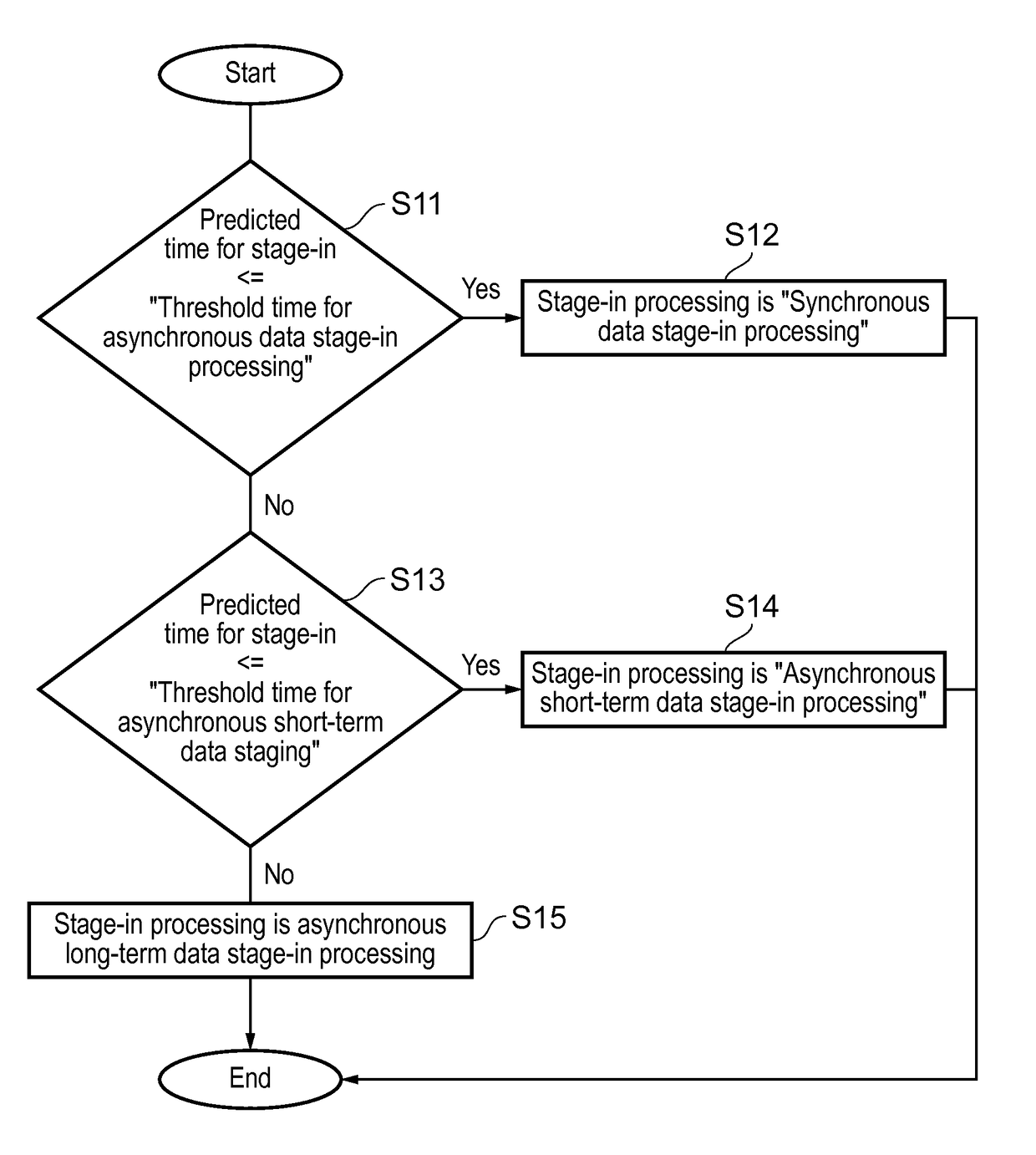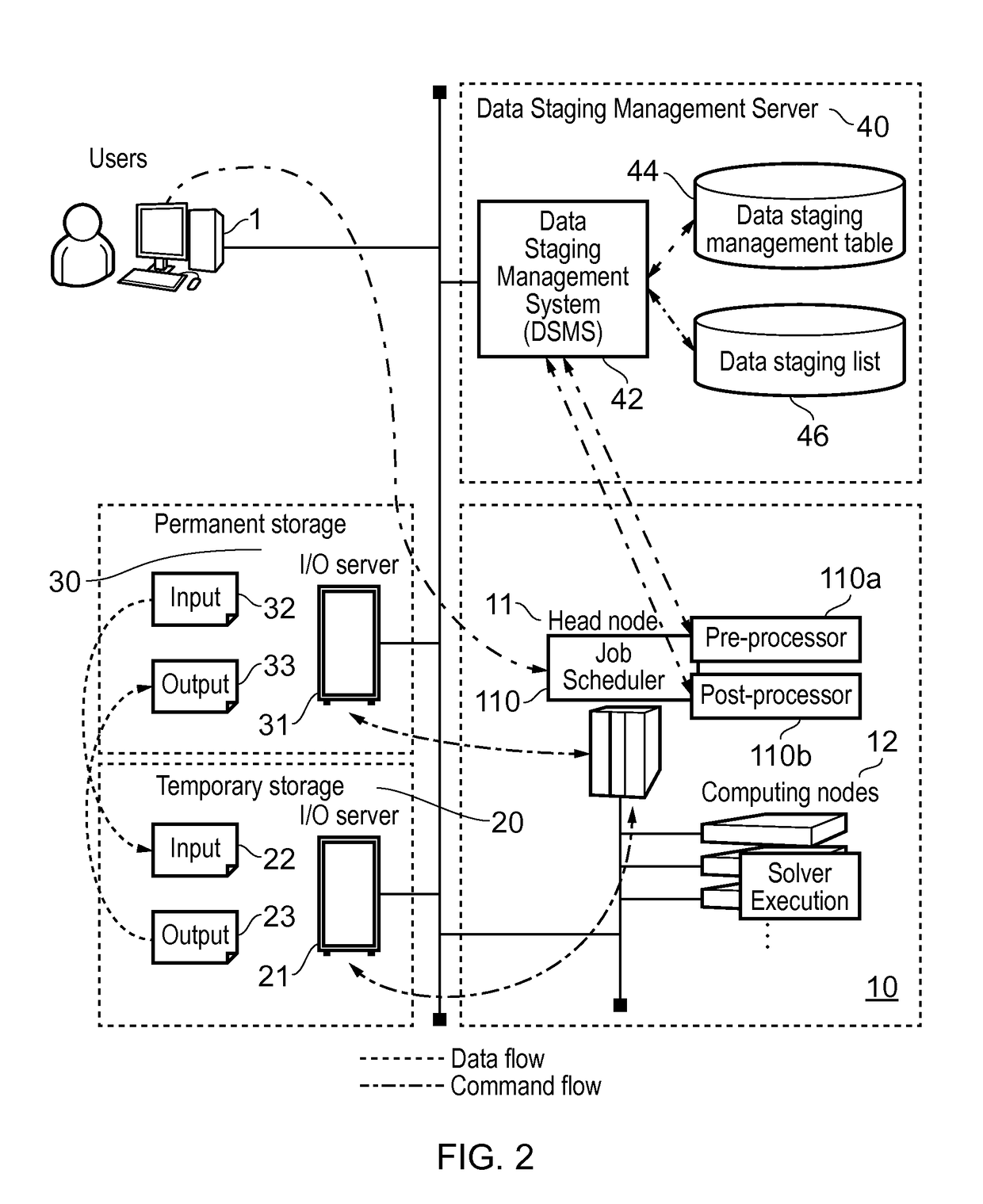Data staging management system
a data staging and management system technology, applied in the field of data staging, can solve the problems of low machine efficiency, waste of electrical power, and inefficient use of computing resources, and achieve the effect of improving resource usage and improving low machine efficiency
- Summary
- Abstract
- Description
- Claims
- Application Information
AI Technical Summary
Benefits of technology
Problems solved by technology
Method used
Image
Examples
Embodiment Construction
[0093]Reference will now be made in detail to the embodiments, examples of which are illustrated in the accompanying drawings, wherein like reference numerals refer to the like elements throughout. The embodiments are described below to explain the present invention by referring to the figures.
[0094]As mentioned in the introduction, when input data staging is carried out, computing resources are reserved for the corresponding job even though they are not being used for computing. Subsequent jobs in the queue must wait for earlier jobs to complete their data staging, even if a subsequent job has relatively modest data staging requirements. This makes occupied resources almost idle and brings about low resource usage. Also in output data staging, the same situation happens. Because the amount of transferred data may be huge, it takes a long time before a job starts to run, and occupied resources are held by the job until data staging is completed. To address this problem, embodiments ...
PUM
 Login to View More
Login to View More Abstract
Description
Claims
Application Information
 Login to View More
Login to View More - R&D
- Intellectual Property
- Life Sciences
- Materials
- Tech Scout
- Unparalleled Data Quality
- Higher Quality Content
- 60% Fewer Hallucinations
Browse by: Latest US Patents, China's latest patents, Technical Efficacy Thesaurus, Application Domain, Technology Topic, Popular Technical Reports.
© 2025 PatSnap. All rights reserved.Legal|Privacy policy|Modern Slavery Act Transparency Statement|Sitemap|About US| Contact US: help@patsnap.com



